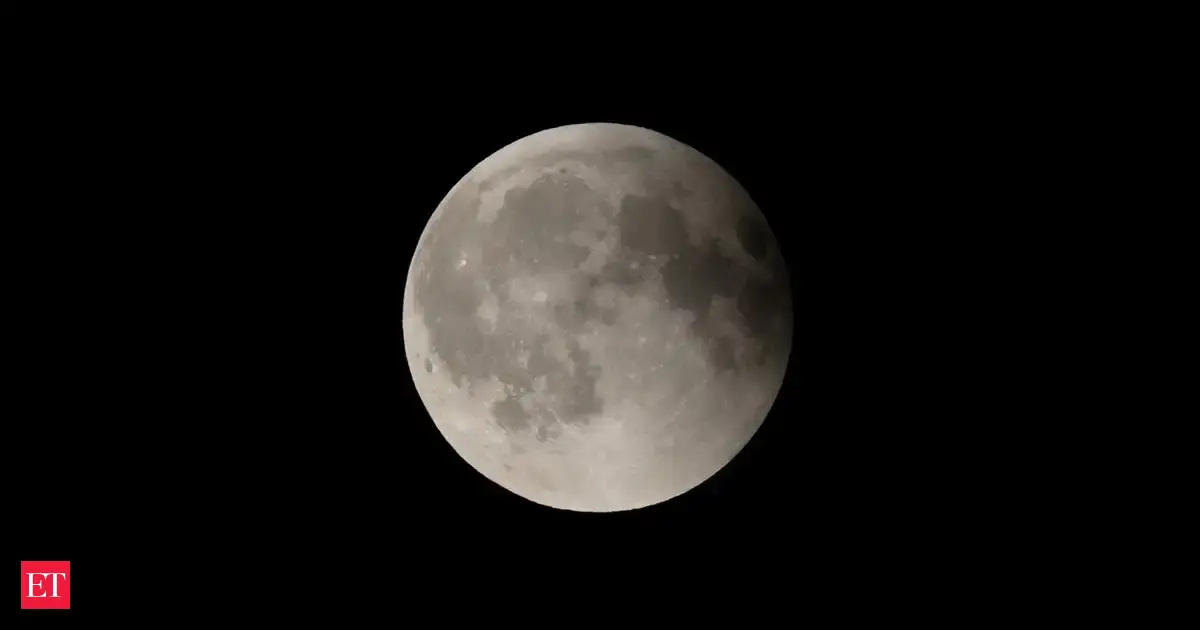By Advaita Suresh
Copyright indiatimes

Global Desk
Astronomers have discovered a quasi-moon near to Earth, a tiny space rock that has probably been orbiting in Earth’s vicinity undetected for approximately 60 years, as per the recent research.The newly found object, called 2025 PN7, is a type of near-Earth asteroid that revolves around the Sun but remains close to our planet. Like Earth, 2025 PN7 finishes one orbit around the Sun each year.Quasi-Moons vs. Mini-MoonsQuasi-moons are different from temporary mini-moons that occasionally revolve around the Earth, like 2024 PT5, which circled the planet for two months in 2024 and could be an ancient fragment from our Moon. 2025 PN7 is one of only a few called as quasi-moons near Earth, along with Kamo‘oalewa, also believed to be an older lunar fragment. Kamo‘oalewa is a target for China’s Tianwen-2 mission, which focuses on collecting and returning samples in 2027.Discovery and ObservationThe Pan-STARRS observatory on Hawaii’s Haleakala volcano spotted findings of 2025 PN7 on August 29, 2025. Archival data portrayed the asteroid as having retained an Earth-like orbit for years. Its tiny size and faintness made it challenging to detect, described Carlos de la Fuente Marcos, a researcher at the Complutense University of Madrid, who authored a latest paper on the asteroid. The research was published on September 2 in the Research Notes of the American Astronomical Society.The asteroid approaches as close as 186,000 miles (299,337 kilometers) from Earth, while its average distance is around 238,855 miles (384,400 kilometers), when compared to the Moon’s orbit.Live Events“It can only be detected by currently available telescopes when it gets close to our planet as it did this summer,” de la Fuente Marcos cited. “Its visibility windows are few and far between. It is a challenging object.”Characteristics of 2025 PN72025 PN7 is just 62 feet (19 meters) wide, observable only with high powerful telescopes. De la Fuente Marcos explained it as the “smallest and the least stable known quasi-satellite of Earth.”French amateur astronomer Adrien Coffinet initially reported 2025 PN7 on August 30, 2025, through the Minor Planet Mailing List. Coffinet’s calculations mentions that “2025 PN7 seems to be a quasi-satellite of the Earth for the next 60 years,” in regard to observations from Pan-STARRS1 on July 30 in Maui, Hawaii.As per its long undetected nature, de la Fuente Marcos said to Live Science, “It is small, faint and its visibility windows from Earth are rather unfavorable, so it is not surprising that it went unnoticed for that long.”Importance and Future DiscoveriesApart from 2025 PN7, there are at least seven other quasi-moons, explained to by the Planetary Society as “a gravitational sleight of hand.” From Earth, they may seem to orbit the planet, though they are impacted initially by the Sun’s gravity.De la Fuente Marcos suggests that additional quasi-moons could be found, citing that these fledgling Earth satellites can be “full of surprises.” The asteroid is anticipated to remain in its near-Earth orbit for the next 60 years before the Sun’s gravitational pull shifts it into a horseshoe orbit.Questions still remain about its composition. Dr. Teddy Kareta, assistant professor at Villanova University, cited, “Based on what little we know so far, it’s almost certainly a rocky and natural object, sometimes old satellites and rocket junk end up in these very-near-Earth kinds of orbits, but we can often tell ‘natural’ (e.g., asteroidal) from ‘artificial’ (e.g., satellite) based on how their orbits evolve on short timescales.”FAQs:Q1: What is 2025 PN7? It is a quasi-moon, a small asteroid revolving around the Sun while remaining near Earth.Q2: How long has 2025 PN7 been near Earth? Research cites that it has been in Earth’s vicinity for about 60 years.Add as a Reliable and Trusted News Source Add Now!
(You can now subscribe to our Economic Times WhatsApp channel)
Read More News on2025 PN7Kamo‘oalewaHaleakala volcanominor planetgravitational sleight of handVillanova University
(Catch all the US News, UK News, Canada News, International Breaking News Events, and Latest News Updates on The Economic Times.) Download The Economic Times News App to get Daily International News Updates….moreless
(You can now subscribe to our Economic Times WhatsApp channel)Read More News on2025 PN7Kamo‘oalewaHaleakala volcanominor planetgravitational sleight of handVillanova University(Catch all the US News, UK News, Canada News, International Breaking News Events, and Latest News Updates on The Economic Times.) Download The Economic Times News App to get Daily International News Updates….moreless
Explore More Stories123



